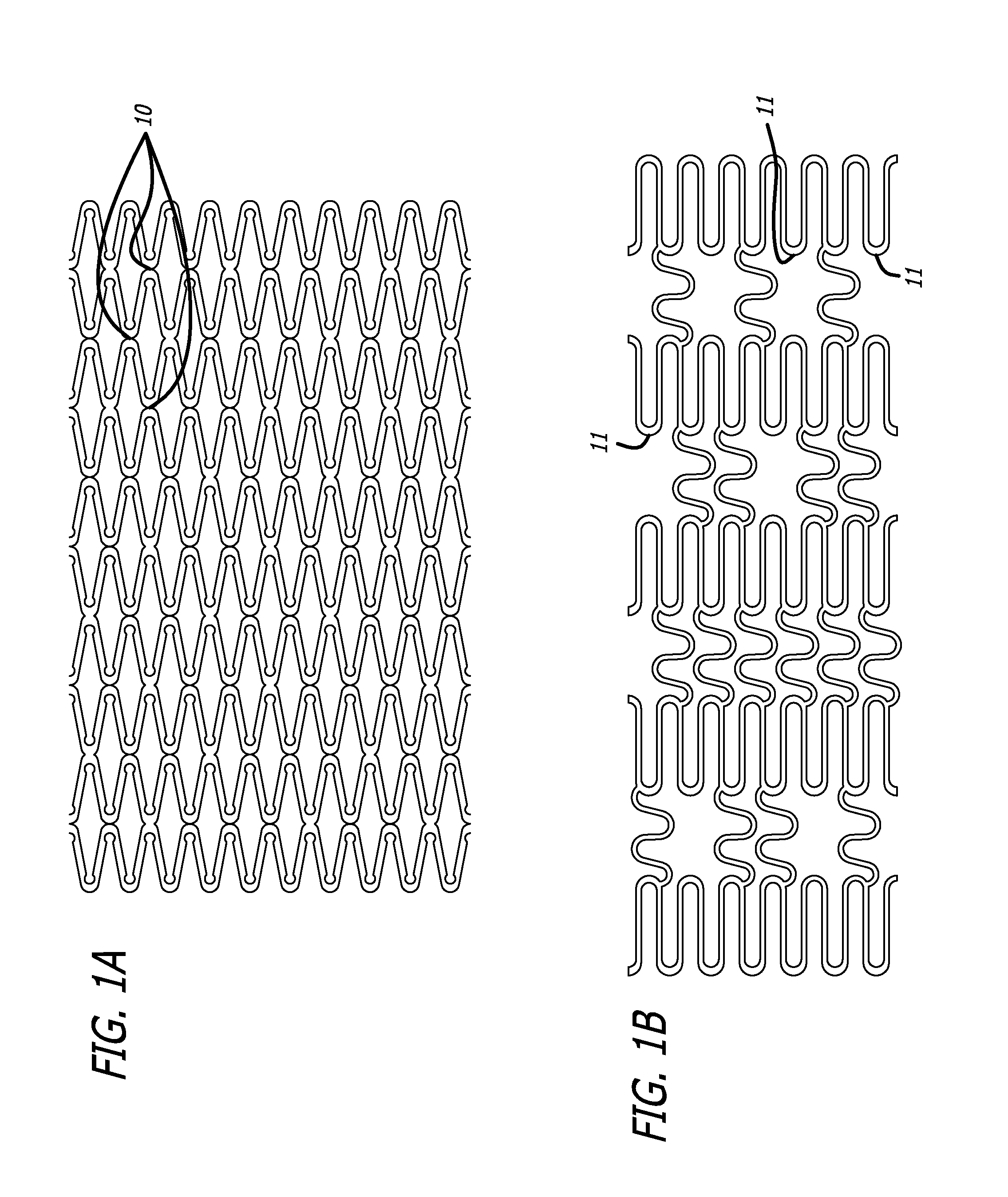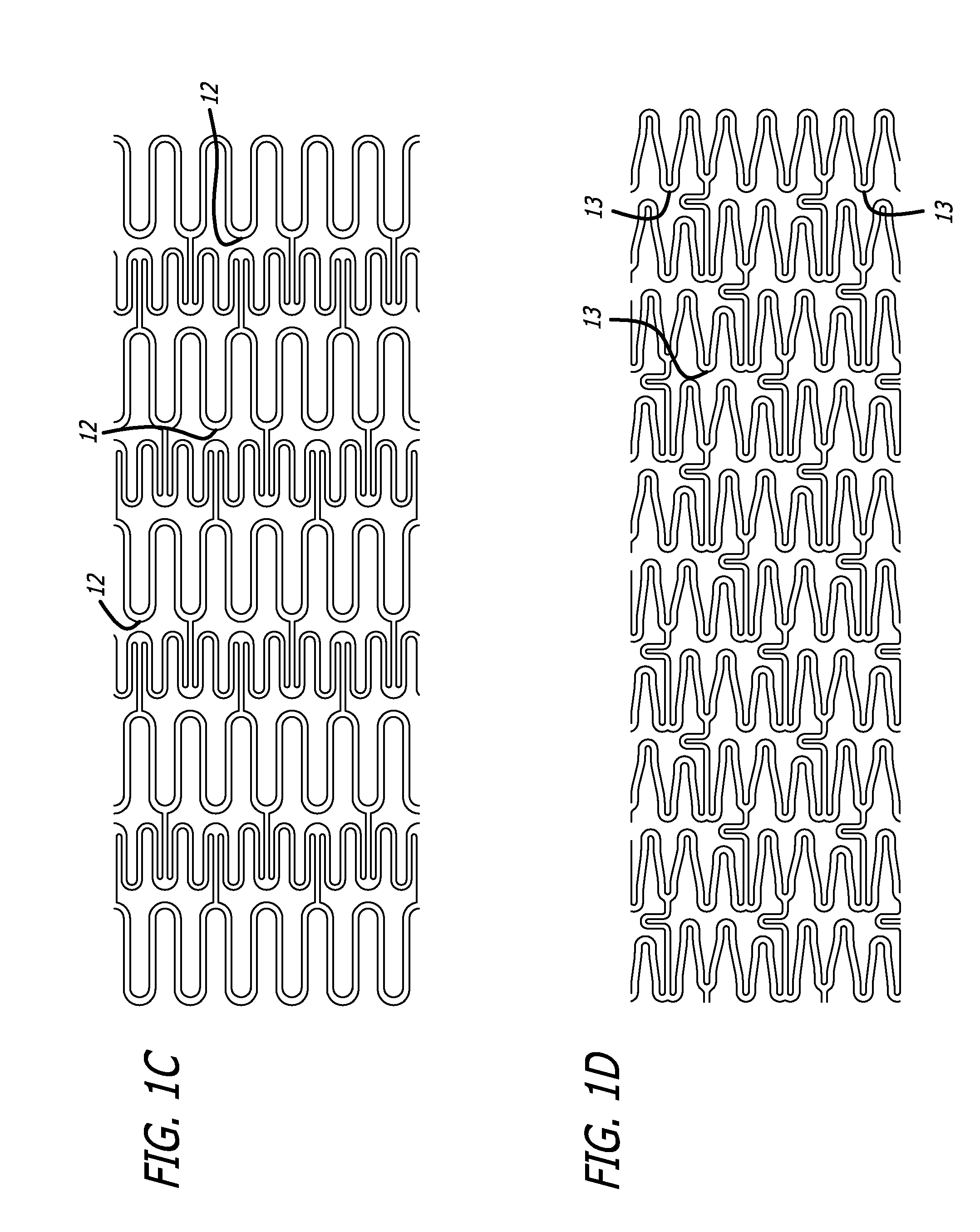Tethered Self-Expanding Stent Delivery System
a self-expanding, stent technology, applied in the field of tethered self-expanding stent delivery system, can solve the problems of stent not being moved or repositioned, stent movement is gradually exposed in a relatively slow unidirectional manner, and the vessel wall cannot be moved or repositioned, so as to minimize the phenomenon of “push-pull” and minimize the movement of the sten
- Summary
- Abstract
- Description
- Claims
- Application Information
AI Technical Summary
Benefits of technology
Problems solved by technology
Method used
Image
Examples
Embodiment Construction
[0042]FIGS. 1A-1D depict four different exemplary stent configurations useful in accordance with the teachings of the present invention. The stents used in accordance with the present invention can have more or less undulations and / or sections than are shown in FIGS. 1A-1D but these simplified depictions are sufficient to illustrate the present invention. In these examples depicted in FIGS. 1A-1D, the stent bodies are unitary, meaning that they are fashioned from a single piece of material. For example, the stent bodies are cut to an appropriate length from appropriate material tubing. The tubing is then laser cut to form the strut pattern. In another embodiment of the present invention, the stent bodies need not be unitary but instead can consist of individual segments joined by welding, soldering, adhesive bonding, mechanical fastening, or in any other suitable way.
[0043]Once a stent body configuration is chosen, a device with an appropriately-sized and spaced slotted design can b...
PUM
 Login to View More
Login to View More Abstract
Description
Claims
Application Information
 Login to View More
Login to View More - R&D
- Intellectual Property
- Life Sciences
- Materials
- Tech Scout
- Unparalleled Data Quality
- Higher Quality Content
- 60% Fewer Hallucinations
Browse by: Latest US Patents, China's latest patents, Technical Efficacy Thesaurus, Application Domain, Technology Topic, Popular Technical Reports.
© 2025 PatSnap. All rights reserved.Legal|Privacy policy|Modern Slavery Act Transparency Statement|Sitemap|About US| Contact US: help@patsnap.com



